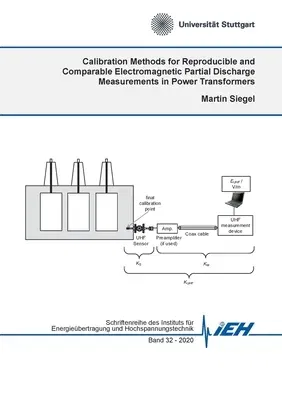The reliability of electrical energy networks depends on the quality and
availability of their electrical equipment, e.g., power transformers.
Local failures inside their insulation can lead to breakdowns resulting
in high outage and penalty costs. To prevent these destructive events,
power transformers are tested for partial discharge (PD) activity in a
routine test before shipment. Furthermore, PD activity can be evaluated
as a diagnostic measurement on-site (on-line or off-line) or be
constantly monitored during service using the ultra-high frequency (UHF)
method. In this thesis, a calibration procedure is proposed for the UHF
method used in power transformers, which is lacking so far. The
calibration process is required to ensure both reproducibility and
comparability of UHF measurements. Only a calibrated UHF measurement
procedure can be deemed reliable and eventually be introduced to
supplement in (site-)acceptance tests of power transformers. The
proposed calibration method considers two factors: The influence of the
UHF sensors' sensitivity and that of the UHF instrument characteristics,
including accessories like cables, pre-amplifier, etc. The UHF
instruments' influence is corrected by using a defined and invariable
test signal as a reference for all recording devices comparable to the
calibration method used in IEC 60270 for electrical PD measurement. The
sensitivity of the UHF sensor is addressed by a characterization of UHF
sensors using the antenna factor (AF) measured in a special reproducible
setup, i.e., a GTEM cell. In this thesis, a self-built GTEM cell is
presented, which is oil-filled to address the environmental conditions
inside a transformer where the sensor will be used. With such a cell,
influences on the AF of UHF sensors are investigated, and it is shown
that sensor sensitivities measured in an air-filled cell can be
corrected to the oil environment. A practical evaluation of the proposed
calibration procedure is performed in a laboratory


